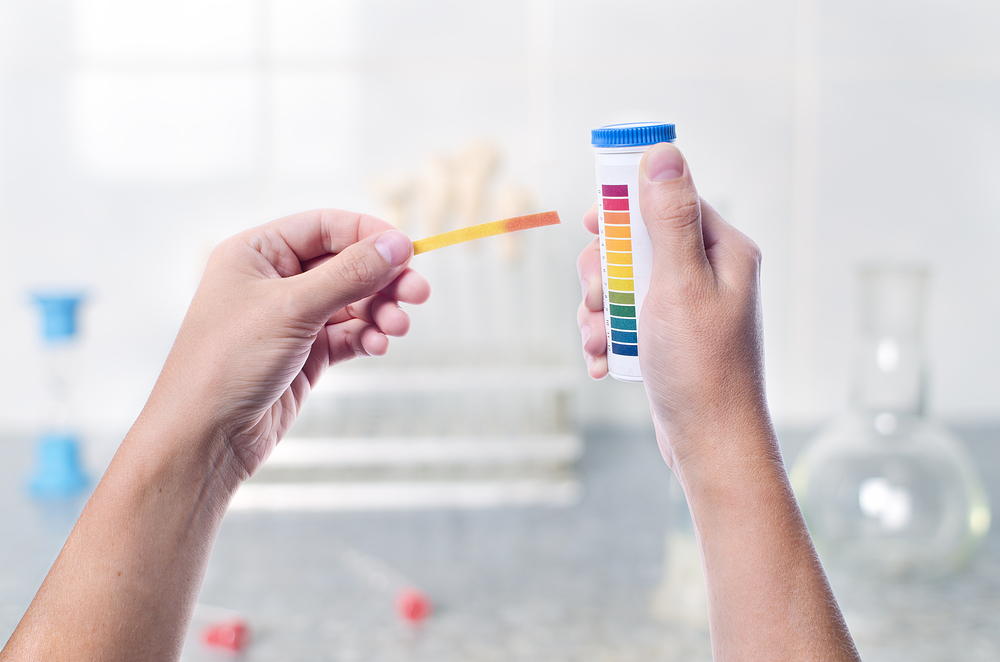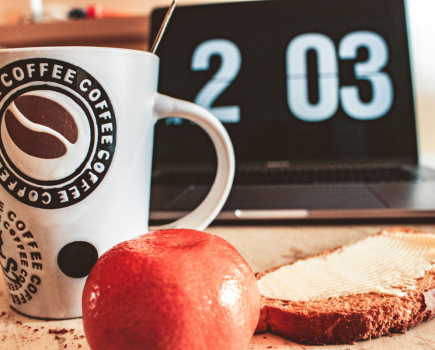Try these easy DIY tests to assess and improve your health – from your energy levels to your digestion – and help you feel fantastic every day.
With a bit of thought and a few simple at-home tests you can get a better understanding of the current state of your health and work out just where you can make a change for the better. Assessing your health at home has never been easier. In fact, DIY health checks are so popular it’s thought the market will be worth £15 billion worldwide by next year. But there’s no need to spend a fortune to get some useful information.
‘It’s important to tune in to your body, look at your symptoms and examine your surroundings because poor health rarely appears out of the blue,’ says Sara Davenport, author of Reboot Your Health (£12.99, Hay House). ‘Your body is probably sending you signals, asking for attention and providing clues. Be your own health detective, then once you’ve decoded the signs you’ll have the answers you need to be happier, healthier and more energised.’
Improve your digestion and stay nourished
If your digestion isn’t working properly you won’t absorb all the goodness from your food. Bloating, intolerances and discomfort after eating could all be signs that your gut health is off key. ‘Much of your health and wellbeing relies on the ability of your gut to digest what you eat,’ says Sara. ‘Testing this and then righting any imbalances can often be the key to feeling well and energised.’
How to test if your digestion is working properly
‘Your stomach uses hydrochloric acid to start breaking down your food,’ says Sara. ‘Not having enough stomach acid could lead to acid reflux and heartburn and affect your digestion.’

Check your stomach acid with the lemon juice test. Next time you feel uncomfortable after a meal take a tablespoon of fresh lemon juice. According to Sara if the pain goes away you may have too little stomach acid. If the pain worsens you may have too much and it would be worth seeing your GP for advice.
How to improve digestion
- Take digestive enzymes with every meal – ‘You can find natural enzymes in raw organic fruits and vegetables, sauerkraut and kimchi or you can take a supplement. Look for one that contains amylase to break down carbohydrates, lipase to break down fats and protease to break down proteins,’ says Sara.
- Practice portion control – If you regularly overeat you’ll put strain on your digestive system. Sara recommends investing in a Full Stop Bowl (£14.99, fullstopbowl.com), a stomach-sized and shaped bowl designed to encourage you to eat only what your stomach can actually hold.
- Chew, chew, chew – Chew each mouthful at least 20 times before swallowing. ‘Chewing produces amylase-rich salvia which starts to break down your food before it gets to your stomach,’ says Sara. Swallowing big lumps of food can cause bloating, discomfort and stop nutrients being absorbed.
Improve your energy levels
‘Feeling exhausted and craving sugar? Experiencing muscle or joint pains? If your body’s pH levels are too acidic you’re likely to feel tired and out of sorts,’ says Sara. ‘Your pH level shows how acid or alkaline you are. A pH of 0 is totally acid, 7 is neutral and 14 is totally alkaline. Bacteria, viruses and even cancer cells thrive in an acid environment so keeping an eye on your level is a good way to protect your health.’
How to test your body’s pH level
‘It’s the pH of your saliva and urine that you need to measure,’ says Sara. You can buy pH testing strips online. Test your saliva first thing in the morning before you eat, drink or clean your teeth. Just pop the strip into your mouth. An optimum saliva pH is 7. Take two urine readings and repeat the test several times over a couple of weeks to get an average.

‘Your first wee of the day is always more acidic, and should be around 6.8-7.2. Test your second wee of the day too, ideally before you eat anything. The acids that have built up overnight should be gone and your urine should be 7.2 or higher,’ say Sara.
How to improve your body’s pH level
- Drink apple cider vinegar – If your pH is too acid, mix two tablespoons of raw, organic apple cider vinegar in hot water and drink first thing in the morning to help to alkalize your body.
- Eat more alkaline foods – That’s lots of fruit and veg, particularly green leafy ones and healthy polyunsaturated fats from oily fish and fewer animal proteins.
- Breathe – Stress can cause acidity to build in your body. ‘It takes one to three minutes of deep breathing to lower your acidity,’ says Sara. ‘Try Power Breathing: Inhale for two seconds, hold your breath for eight seconds and then exhale for four seconds. Repeat 10 times.’
Tests to help you lose weight
‘Body fat produces hormones and if you have too much of it, it could disrupt your health,’ says Sara. ‘Visceral fat is the most dangerous type of fat and sits around your middle, inside your abdominal cavity, building up around your liver, kidneys, pancreas and intestines, causing potential problems with high blood pressure, insulin resistance and high cholesterol levels.’
- How much fat does the body need to function properly?
Am I overweight? Here’s how to test
Work out your waist/height ratio by dividing your waist measurement in centimetres by your height in centimetres. A result of less than 0.5 is considered healthy. Greater than 0.5 suggests you have a higher risk of diabetes, heart disease and stroke and could be a sign that you have some visceral fat. You can also assess your waist measurement independently of your height – in women a measurement over 80cm (31in) increases your risk of cardiovascular problems.
Weight loss tips
- Take regular measurements – Keep an eye on your waistline by measuring it regularly so you can keep it in check.
- Lose weight if you need to – A healthy diet full of fresh fruit and vegetables, wholegrains, lean proteins and healthy fats and regular exercise are the very best way to lose weight. ‘Aim for slow and steady weight loss through lifestyle changes rather than a crash diet and you’ll keep the pounds from returning. For each 3-4kg (6–8lb) of weight you lose, you could lose a corresponding 2.5cm (1in) from your waistline,’ says Sara.
- Eat lentils – Lentils contain a starchy substance call inulin that is thought to help break down visceral fat, which could help you lose your belly fat. Try them in soups, salads and stews.
How to protect your longterm health
‘Inflammation is a trigger behind most disease,’ says Sara. ‘It’s your body’s reaction to what it regards as a threat and it kicks in whenever you have a virus, unfriendly bacteria or wound, and in most instances, is a helpful process. However, it can become a chronic issue and can be a sign that all is not right.’
How to test your inflammation levels
Look at yourself in the mirror and see if you notice any of the following: Is your face or body slightly swollen? Do you feel a bit puffy? Have you moved up a size in your clothes lately? It may not be weight gain but a sign of inflammation.
How to reduce inflammation
- Eat well – ‘Take out the foods that trigger inflammation, such as sugar, white flour products such as biscuits and cakes, short-grain white rice, potatoes and processed cereals,’ says Sara. ‘Avoid MSG, gluten and casein – in wheat, rye and whey products, and also alcohol.’ Eat fruit, veg, wholegrains and healthy fats instead.
- Watch your fat intake – Avoid saturated fats found in dairy products, meats and processed foods, as well as trans-fats in processed and fried foods – all of which could contribute to inflammation.
- Try turmeric – Turmeric’s active compound curcumin has been shown to have a potent anti-inflammatory effect. ‘Try taking a curcumin supplement, preferably in 300mg doses three times a day,’ says Sara. ‘You should see results after just two weeks.’
Daily health checks you should try
How are you feeling? When did you last stop to ask yourself how you’re really feeling? Are you happy or stressed? Full of energy or tired? ‘Our lives are so busy we hardly have time to notice how we really are, so take a moment to examine your energy, happiness and health right now,’ says Sara. Try and repeat these tests regularly to see if things are improving, especially after you’ve made lifestyle changes.
- Your energy Sit quietly for a few minutes and listen to how your body is feeling. Imagine that there is a battery inside you. How full is that battery on
a scale of 1-10? Write down the number that instantly springs to mind and make
a note of the date. - Your happiness ‘Next, become conscious of how happy you’re feeling,’ says Sara. ‘Breathe deeply for a few minutes and really notice how you feel. Then on a scale of 1 to 10, where 1 is “everything is fine” and 10 is “it couldn’t get any worse”, rate how happy you are here and now.’
- Your health Make some notes about the current state of your health. ‘List any physical symptoms that are worrying you, note down any diagnosed issues along with any medication you’re taking,’ says Sara. ‘What’s your current weight, how often do you exercise, how many hours do you sleep at night and how often do you wake up.’ Then close your eyes and give your health a rating out of 10 – the first number that comes into your head.
- Now read: What do your food cravings mean?
- Could you lose weight with the paleo diet?








